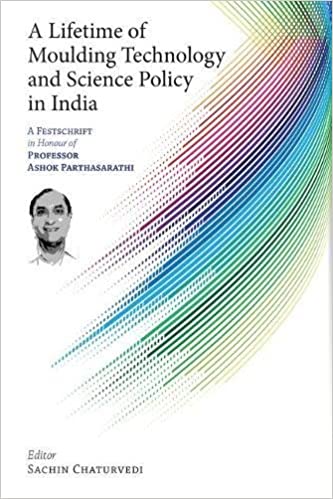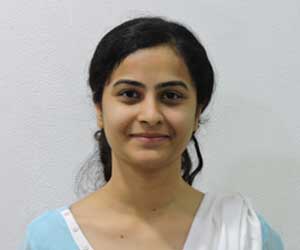Science and Technology (S&T) has assumed great salience in India’s development and security matrix. In last few years’ policy initiatives like Make-in-India, Start-up-India and Digital India Programme have further given an impetus to this thought process. However, to fully grasp the development of S&T in India, we must understand it from a historical perspective. This is where the foundation of these policies and structures rests. Apart from comprehending the complex decisions that were taken for benefit of the nation, there are several lessons to be learnt and practitioners that need acknowledgement by the present day Science enthusiasts in the country.
One of the prominent names in the India’s S&T journey is Professor Ashok Parathasarathi. Through a festschrift on Professor Ashok Parathasarathi for his 75th birthday, this book gives an insight into India’s S&T history post-independence. It highlights the pivotal role of Prof Parathasarathi in promoting India’s self-reliance in S&T. Prof Parathasarathi is acknowledged as a great visionary who has been committed to the development of S&T capabilities and industries in India. He has held many important positions with the government, while contributing to the research and policy-making in this sector. He was a former Secretary in the department of Scientific and Industrial Research, the Department of Electronics and the Ministry of New and Renewable Energy. What puts him in a unique category is the fact that he was, for almost a decade, S&T Adviser to late Prime Minister Mrs. Indira Gandhi. He built 14 public sector companies in electronics making hi-tech electronic products ranging from microchips to optic fiber ad satellite-based communication. This also led to an establishment of autonomous structures for S&T inclusive of financial, recruitment and procurement to keep them away from bureaucratic meddling.
This book is a collection of interesting reminiscences by his colleagues, associates, students and professional friends. This collection succinctly brings out the contributions and reforms that have shaped the S&T policies and industries in India. The concept of self-reliance, as in the then Indian policy framework, was inclusive of- access to technology, institution development and capacity building and evolving a framework for South-South Cooperation (SSC). In the quest for technological self-reliance the research system in the public sector in agriculture, medicine and applied research were expanded while new institutions were set up. In sectors like pharmaceuticals, indigenous capacity was developed with foreign technical assistance. However, the role of state was clearly demarcated as that of a facilitator and not an agency that directs or controls.
Some of the fundamental and decisive Initiatives by Prof Parathasarathi have also been discussed in the book. For example in the Ninth Five Year Plan Technology Mission Programmes in sugar technology, bio-fertilisers, bio-pesticides, aquaculture, and fly ash utilization etc were initiated. For integrating S&T in the socio-economic sectors, socio-economic ministries set up 24 S&T Advisory Committees (STACS) in the respective sectors.Initiatives that aimed for the establishment of Department of Science and Technology (DST), Department for Scientific and Industrial Research (DSIR) and Technology Development boards (TDB) were taken at this time.
In the mid-70s itself, Electronics was recognised as the key technology of future by the Central Government which resulted in the setting up of many central public sector units like BEL, ECIL, among others. For the promotion of advanced electronics industries an Electronics Commission was also established. The country became the largest producer of milk owing to the success of Operation Flood. However, this was achieved due to a whole range of efforts, institutions and policy initiatives, wherein Prof Parathasarathi again had a major role to play. For the large scale production of Electronic Milk Tester in the country, Joint Ventures had to be established in the country. And this is where Prof made critical interventions through his position in the government. The Electronic Milk Tester can rightly be credited for changing the lives of millions of small farmers.
His was motivated by a vision that emphasised on a number of key elements and principles, including sustainable development; the preservation of natural and human heritage; ‘people-centred’ development and grassroots participation; and a view of co-operation as a complementary agenda to the new-found global emphasis on competition.
Considerable developments were made to develop critical and sensitive technologies during his time, which included defence R&D. He was also amongst the first to debunk the claim that nuclear energy was not a “clean” source of energy, since it produces radioactive wastes at every stage. This made him a staunch advocate of renewable sources of energy from way back in time. He emphasised on the importance of inter-sectoral planning and coordination for the growth of renewable energy in the country, while promoting such programmes at DST. He was a man ahead of his time to push for non-linear methods and analysis.
In the international realm too Prof Parathasarathi is well-known for his contributions. He played a major role through his contributions to the Pugwash Movement. The Pugwash Movement even agreed on the definition of self-reliance provided by him: “Self-reliance is to be understood at the national level of each developing country as the will to buildup and use a capacity for autonomous decision-making and implementation, on all aspects of development process including science and technology.” He was also recognized for his involvement in establishment and survival of Science Policy Research Unit at the University of Sussex in the UK.
Prof Ashok Parathasarathi has himself authored a book which is recommended by some renowned scientists and policy makers, who have written in this festschrift. The book, called “Technology at the Core: Science and Technology with Indira Gandhi”, has some fascinated stories and accounts of major events in Indian Science and Technology Policy making. But at the same time, one can agree with some interesting ideas mentioned in the book, which includes the need for coming up with a ‘National S&T Archive’. Such a repository will be highly beneficial for scholars and even the policy makers who want to deal with this subject in depth. These could include some policy-prescriptions like National Committee on Science and Technology’s approach document, among others mentioned in the book.











Post new comment